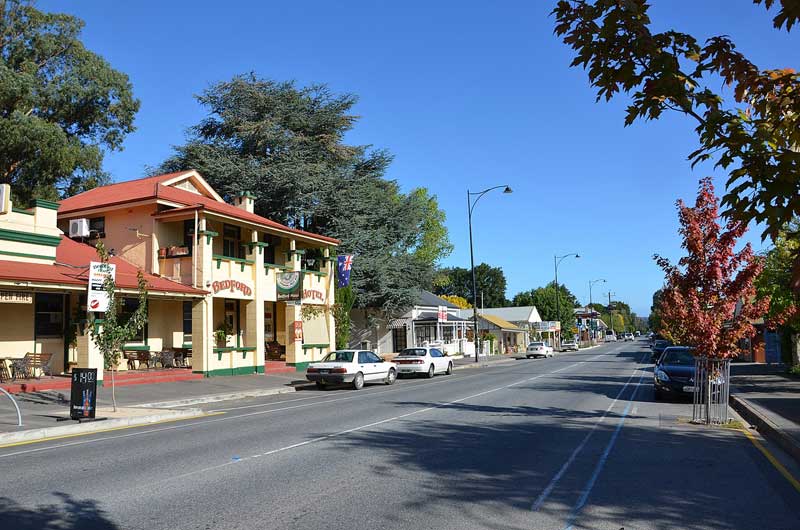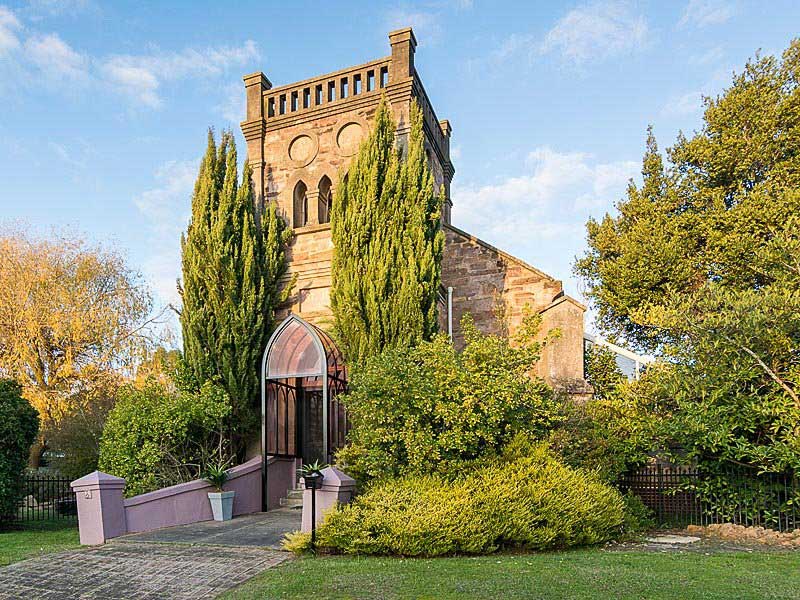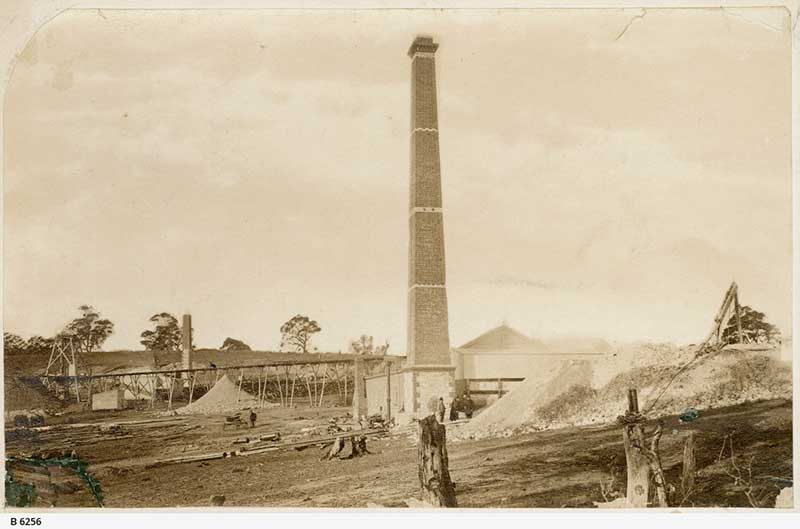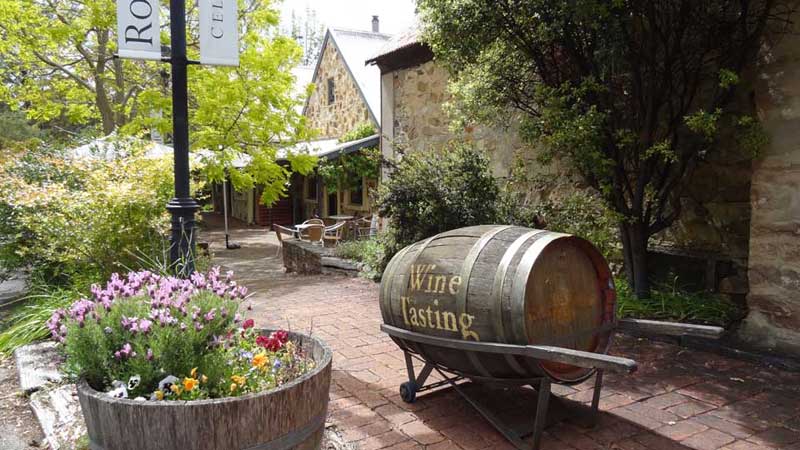Adelaide, South Australia

Woodside
Woodside, like Oakbank, was established by James Johnston, in the 1850s. Again it was named after a place in Scotland. Woodside is deemed by many as the most attractive town along the Onkaparinga valley in the Adelaide Hills. It exudes nineteenth century prosperity, reflected in its many fine homes and public buildings.Where is it?: Woodside is between Balhannah and Lobethal, 37 kilometres from the state capital, Adelaide. It is on the Onkaparinga Valley Road, South Australian route B34, and Mt. Barker is around 32.6 km away from Adelaide.
Woodside is home to the Woodside Barracks (16th Air Land Regiment), which is located in nearby Inverbrackie. The establishment by the Commonwealth Government of the Woodside army camp in 1926-27 brought another influx of population to the district. This increased considerably with the advent of the Second World War in 1939 and the large-scale training of army personnel which took place here up until 1945. After the war, in the late 1940s, the camp became the first home in Australia for hundreds of post-war immigrants, many of whom found work in the booming woollen industry of Lobethal.
The town's amenities include a swimming pool, library, second hand store, grocery store, tennis club, bowls club and playing fields. Local businesses include Woodside Cheese Wrights, Melbas Chocolate Factory, a Lobethal Bakery and Bird in Hand winery.
Significant early buildings in the town include the Woodside Inn (1850); St Mark's Church of England (1851); the Primitive Methodist Chapel (1851); a primary school (1856); the Bedford Hotel (1857); a Primitive Methodist Chapel (1857, later a dairy factory); Hunter's general store (c1858); police station and courthouse (1859); Halstead's slaughterhouse (c1860s); St Petri Lutheran Church (1865); coach station 1874, now demolished); a row of worker's cottage at 11 Moffett Street (c1870s); and the Woodside Institute (1880). One of the most prosperous periods in Woodside's history was between 1882 and 1890 when the Woodside mines were in operation. One of the few community buildings constructed during this period was the Oddfellows Hall, which was built on Moffett Street in 1886.
The Police Station and courthouse complex is a solid, well-built group dating from the town's earliest years. Many other buildings catch the eye - the original St Mark's Church of England and the Uniting Church (originally a Wesleyan Chapel) both date from the early 1850s. The Bedford Hotel, for instance was re-modelled, changing the appearance of a building which has served the public since 1857. One of the better-known homes is Woodlands, in Elizabeth Street, a two-storey balconied structure built about 1859 for Dr Hermann Esau - he used it as home, surgery and dispensary, as did later doctors.

St Petri Lutheran Church (1865), 8 Roberts Street, Woodside. It is now a private residence. The foundation stone at St Johns was laid on the 31st October 1856. Dr KH Loessel from the Lobethal Lutheran Church left that congregation to 'liberalise' the Lutheran Church of Woodside, for the then many Lutherans who lived in the Woodside area. From the beginning, many Lutherans had their links with the British Church.
Woodside Cheese Wrights: Doing a day trip drive through the Adelaide Hills whilst staying in the city, Woodside Cheese Wrights Cheese Making Classes are an obvious stopping point for a cheese lover. The staff are full bottles on a variety cheeses, with plenty of local cheeses to taste. Cheese and more is on sale, and it's located alongside Chesterfield Whiskey cellar door and Melba's Chocolate and Confectionery. Location: 22 Henry Street, Heritage Park, Woodside, South Australia 5244.
- More
- More
Melba's Chocolate and Confectionery: a working factory located in a heritage listed complex. From 1919 until 1976, the South Australian Farmers Cooperative Union made the site famous by producing cheese, butter, margarine and small goods, which were recognised worldwide. With 1940's era chocolate and confectionery making equipment, Melba's Chocolates began their dream making old Australian favourite chocolate and confectionery. The complex developed from there and is now known as 'Heritage Park' and has become home to other cottage industries. Visitors today find the old cheese factory transformed into a large emporium styled confectionery factory shop. An additional interesting feature is the collection of antique and quaint memorabilia from times past, which can be found on display around the factory walls.
Location: 22 Henry Street, Heritage Park, Woodside, South Australia 5244.

Bird-in-Hand Mine
Woodside Goldfield
The Woodside Goldfield located east of Woodside and extending from Oakbank to Mount Charles, has a recorded production of about 30000 oz. More than 23000 oz of this came from the three largest mines, Bird-In-Hand, New Era and Eureka. In 1849 alluvial gold was found in the Onkaparinga River and its tributaries near Balhannah. The South Australian Gold Company and the Onkaparinga Gold Company were formed in 1850 and purchased land which they claimed contained payable gold, but both companies ceased operations in 1851. In the late 1860s further finds of alluvial gold were made near Balhannah. The Woodside Goldfield had a recorded production of 933 kg from 1881 to 1938.Few structures survive today to describe the significant mining history of the Woodside area. Outstanding remnants at these sites include the battery chimney at the Lone Hand 92 mine (currently on the State Heritage Register) and the smaller battery chimney at the Ridge mine (recommended for the local heritage register). The original Bird-in-Hand Gold Mine was mined in 1881 and was the largest of 17 mines in the Woodside Goldfield in the 1800’s. The property named “Goldwyn” in recent years has been used as a dairy before being acquired by Terramin in 2015.

Adelaide Hills Wine Region
Wine grapes were first planted in the Adelaide hills in the early 1840s. Situated east of Adelaide, the long and narrow Adelaide Hills region runs through the southern Mt. Lofty ranges. It is one of South Australia's largest wine growing regions, stretching from the edge of the Barossa and Eden Valleys in the north, to the boundaries of McLaren Vale and Langhorne Creek in the South. The high altitude combines brilliantly with the favourable climate, to allow grapes to mature at a slower pace than other regions, giving the wines intense elegant flavours and characteristics.One of the earliest wineries and vineyards in the area is mentioned in the Adelaide papers for sale as follows: 1865 - Swithen Farmer - Section 6131 "Chain of Ponds". Winemakers plant complete with several thousand gallons of wine, wine presses, fermenting vats, casks, large boilers. Wine vintages 1863-1865. 16 acres of vineyard.

About Woodside
Brief history: The first European explorers through the Woodside district were Dr George Imlay and John Hill in January 1838. In 1839 the South Australian Company took out several special surveys which secured much of the central Mount Lofty Ranges and the sources of the Onkaparinga.The Johnston family of Oakbank founded Woodside in the 1850s, primarily to improve their brewery business. Gold was discovered in area. The largest mine was the Bird-in-Hand mine which operated from 1881 to 1889.
Woodside began to develop as a commercial centre in the mid-to-late 1850s. It also became the centre of Government with the establishment of the Council Offices in 1853, and the building of a Police Station and Court House in the following year. The larger present-day Court House and Cell Block were built in 1859.
Woodside was served by the Mount Pleasant railway line from 1918 to 1953.








